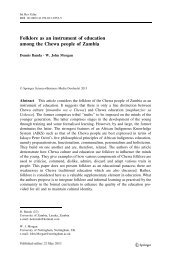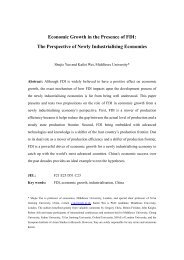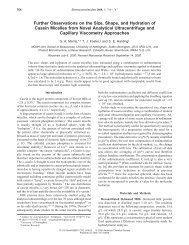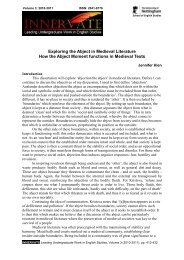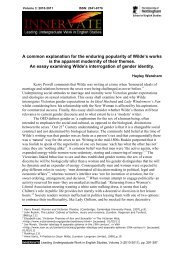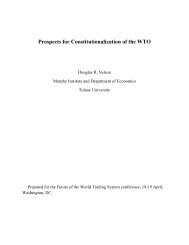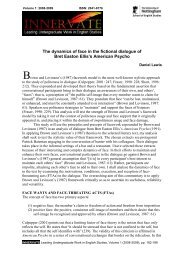Grouted Macadam: Material Characterisation for Pavement Design
Grouted Macadam: Material Characterisation for Pavement Design
Grouted Macadam: Material Characterisation for Pavement Design
Create successful ePaper yourself
Turn your PDF publications into a flip-book with our unique Google optimized e-Paper software.
Chapter 2 Review of “Traditional” Road <strong>Pavement</strong> Types and <strong>Design</strong><br />
SAMIs can be laid as continuous membranes like geotextiles or they can comprise<br />
thin layers (≅ 10 mm) of a modified type of asphalt (Nunn and Potter, 1993).<br />
However, this kind of solution is only effective in situations where no vertical<br />
movement occurs between the edges of a crack.<br />
Rein<strong>for</strong>cement of the asphalt overlay is generally made with geogrids (manufactured<br />
with steel, glass fibres or polymers). The rein<strong>for</strong>cement can either be applied at the<br />
interface between the cracked pavement (or base) and the new overlay or closer to<br />
the surface, depending on the type of movement of the cracks (Nunn and Potter,<br />
1993).<br />
Increasing the thickness of the bituminous overlay is another method to delay the<br />
reflection of the cracks at the surface of the new layer. In fact, the current practice to<br />
minimise reflective cracking in UK is to lay thick, and there<strong>for</strong>e expensive,<br />
bituminous surfacing making this type of construction less competitive (Ellis et al.,<br />
1997). According to Thom (2003a), the inclusion of rein<strong>for</strong>cement in new overlays<br />
generally reduces their required thickness by 25 to 70 mm, which represents a<br />
considerable saving in the cost of the new material.<br />
The use of polymer modified bituminous mixtures represents a way of reducing the<br />
appearance of reflective cracks in the surface of composite pavements, due to the<br />
increased flexibility of the material, associated with improved temperature<br />
susceptibility. Softer bitumens can also be used although these may lead to<br />
permanent de<strong>for</strong>mation of the layer if not well chosen (Nunn and Potter, 1993).<br />
A way of treating the existing concrete pavement or base is to deliberately introduce<br />
cracks at a closer spacing than the naturally occurring thermal transverse cracking.<br />
Thus, the magnitude of the thermal movements at each individual crack will be<br />
reduced. Hence the tensile strains in the asphalt will also be reduced, minimising the<br />
occurrence of reflective cracking. Any reflected cracks should be much finer and less<br />
likely to lead to deterioration in the surface layer. Minimising the size of the surface<br />
crack, by controlling its location and severity, gives a longer pavement life and<br />
reduces future maintenance costs, both in terms of maintenance works and in the cost<br />
26



